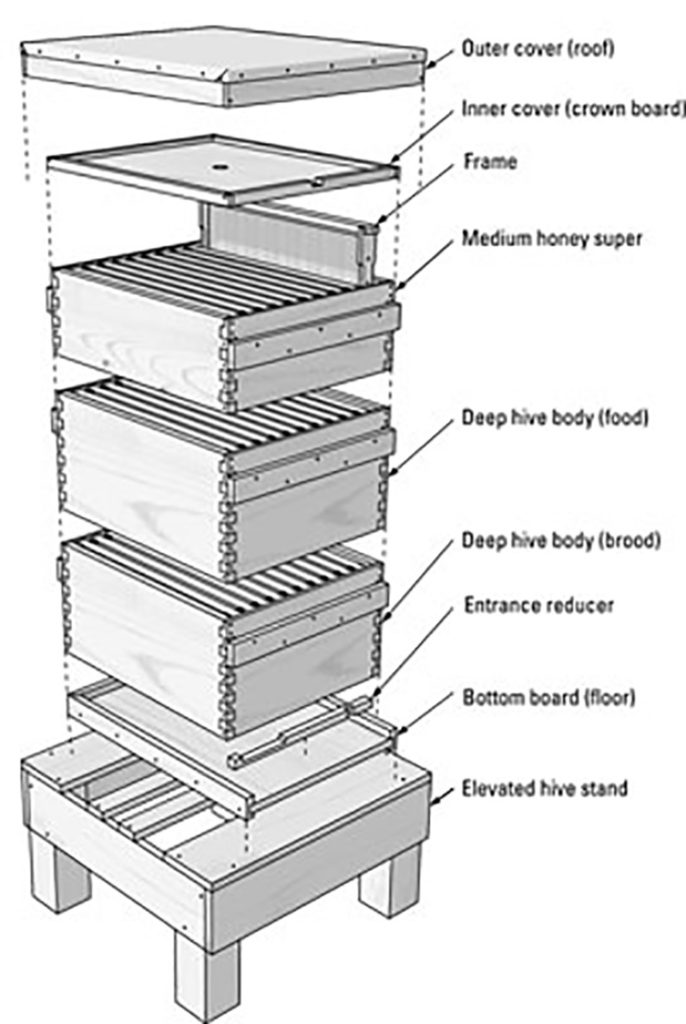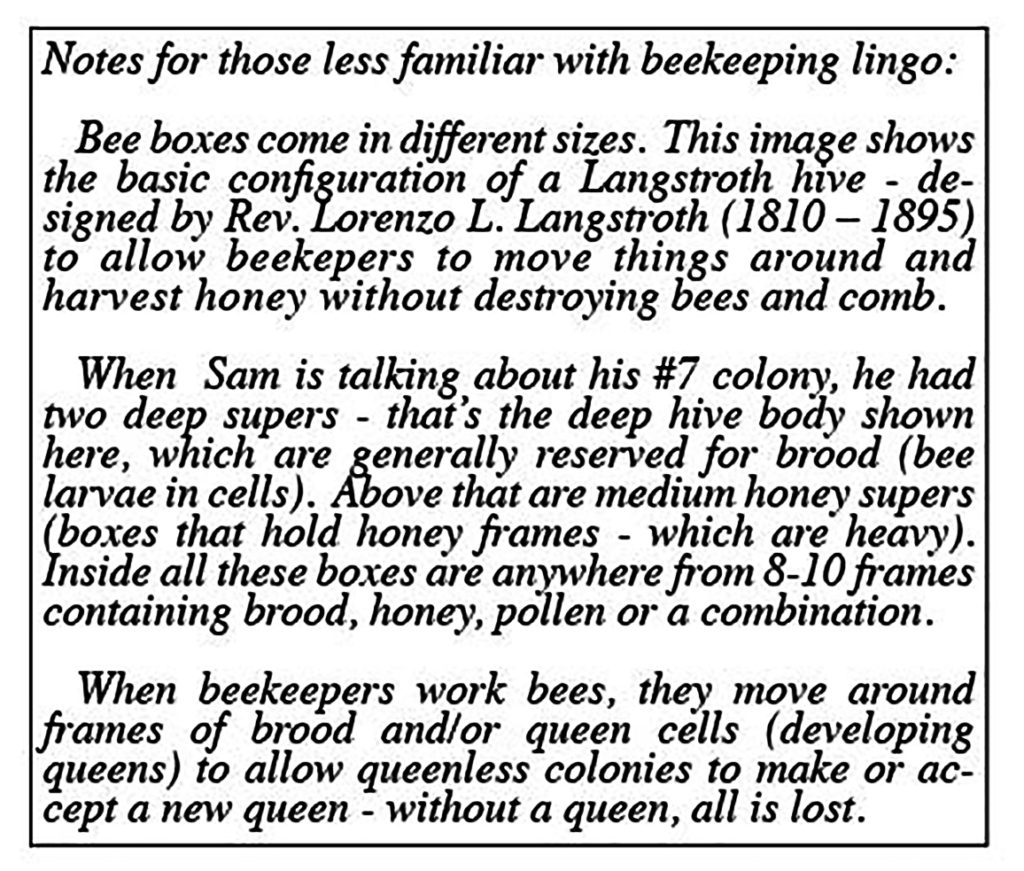Bee Lines: Notes on foraging and hive manipulations
by Sam Hall –
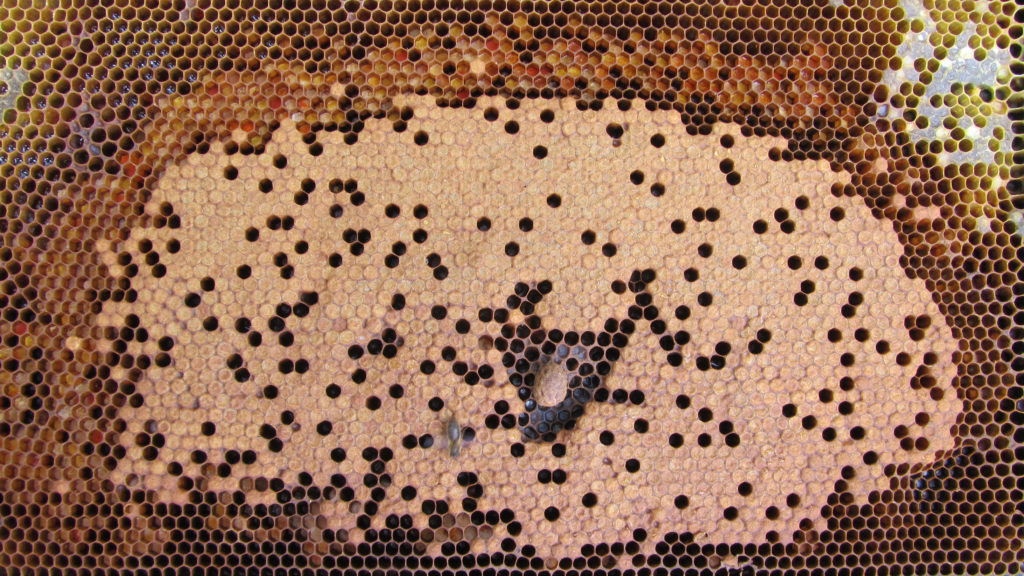
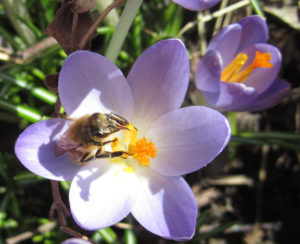
Last Thursday I thought I heard an early swarm when I got near the Apricot tree in the bee yard. Instead it was the bees relieving the blossoming tree of some of it’s nectar and pollen, thereby insuring it will be bearing fruit with the possibility that one of those fruit might start another tree, if nature smiles on it.
There are so many things in bloom that it must seem to the bees that it is a continuous smorgasbord. Dandelions are in full bloom and many of the fruit trees including some apples, plum, peach and nectarine are in bloom. The locust in my area have not bloomed yet but it would not surprise me to see some of them bloom before the end of the month.
On May 5th, I took a split (nuc) from my survivor colony #7. The configuration of #7 starting at the bottom was 2 deep supers then a medium super then a top feeder. The medium was full of brood and bees. The second deep (right below the medium) also had a large amount of sealed brood which is where I took two frames of brood and bees from for the split. They had let the new Carniolan Queen which I had banked there for the split die. Normally, bees will take care of any Queen placed in their keeping including a caged one which was this instance. Not sure what turned them against her. My guess is that even though she was supposedly a well mated Queen (which I had paid for), she was not properly mated and the bees were not going to waste their time with her. Again that is only a guess.
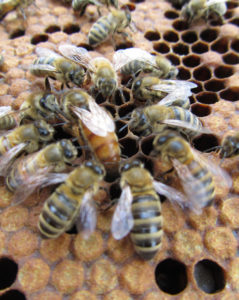
The question immediately was do I return the frames of brood to #7 or do I try something else. From my notes I knew that colonies #3 and # 5 had some swarm Queen cells. Checking #3 the swarm Queen cells were empty not being used. Very often the bees will make emergency Queen cells in case they need them. However, #5
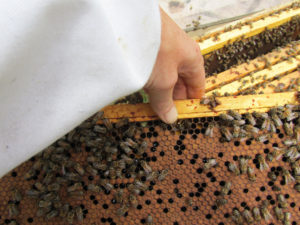
had a Queen cell with a very viable Queen larvae developing in it complete with royal jelly. I took that frame and brushed off as many of the bees that I could and put that frame into the split.
Fed the split syrup and 1/3 of a pollen patty. I brought them 10 miles to my home in Canandaigua and put them behind the garage. The bees from the nuc/split I had previously taken from colony #14 had grown quite strong. This nuc was also behind the garage and it immediately attacked and tried to get into the new nuc to rob it. So I did not release the bees from the new nuc as that would have ex
posed them to a greater threat of robbing. On 5/10/18 I took the new nuc and put it in friend’s back yard a half mile away and opened up the entrance. Will check Monday or Tuesday to see if any of the Queen cells are mature. I say Queen cells as even though I only saw one being worked the bees are very adept at hiding Queen cells and I’m sure there are more than the one I saw.
Recently I re-read Mark Winston’s “Bee Time”. The first three sentences of the prologue are compelling and enchanting “Walking into an apiary is intellectually challenging and emotionally rich, sensual and riveting. Time slows down. Focus increases, awareness heightens, all senses captivated.”
Would that I could say it as well.
Sam Hall is a Western NY beekeeper who first worked bees as a child growing up on a ‘dirt farm’ in Allegany County, NY. He has kept bees for most of his adult life and believes that his mistakes ‘far outnumber his successes.’
